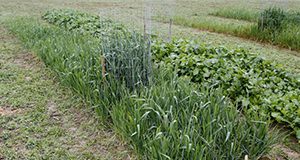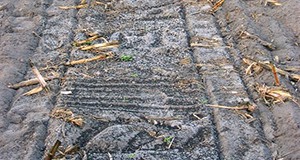
Many Floridians enjoy the opportunity to hunt, watch, or photograph white-tailed deer. Hunters and landowners often plant cool season forage plots both to attract wildlife and to provide a dependable food source. But where there is a high deer population or scarce food resources, deer may forage on food plots as soon as the plants emerge and before they become established. This fact sheet presents the results of research conducted at the UF/IFAS North Florida Research and Education Center in Quincy into the effectiveness of various strategies hunters and landowners can use to temporarily limit access to new food plots until the plants are well established and strong enough to attract and sustain hungry deer through the winter. Written by Holly Ober, Cheryl Mackowiak, and Ann Blount and published by the UF/IFAS Department of Wildlife Ecology and Conservation.
http://edis.ifas.ufl.edu/uw410
Tag: Cheryl L. Mackowiak
Florida Biosolids: Rules for Biosolids Classes
 Biosolids are the liquid, semisolid, and solid fractions of the treated waste stream from a domestic waste water treatment facility. This 5-page fact sheet, part of the Florida Biosolids series, provides an overview of biosolids, biosolids classes, pathogen reduction, vector attraction reduction, and metal contaminants, and also discusses the purpose, applicability, and history of Chapter 62-640, Florida Administrative Code. Written by John Hallas, Ann C. Wilkie, and Cheryl L. Mackowiak, and published by the UF Department of Soil and Water Science, December 2015.
Biosolids are the liquid, semisolid, and solid fractions of the treated waste stream from a domestic waste water treatment facility. This 5-page fact sheet, part of the Florida Biosolids series, provides an overview of biosolids, biosolids classes, pathogen reduction, vector attraction reduction, and metal contaminants, and also discusses the purpose, applicability, and history of Chapter 62-640, Florida Administrative Code. Written by John Hallas, Ann C. Wilkie, and Cheryl L. Mackowiak, and published by the UF Department of Soil and Water Science, December 2015.
http://edis.ifas.ufl.edu/ss635
Florida Biosolids: Management and Land Application Rules
 Biosolids are the liquid, semisolid, and solid fractions of the treated waste stream from a domestic wastewater treatment facility (WWTF). On August 29, 2010, the Florida Department of Environmental Protection (FDEP) formally adopted its rule for the management of wastewater biosolids, Chapter 62-640, Florida Administrative Code (F.A.C. 2010). This 6-page fact sheet from the Florida Biosolids series covers applicability of the rule, the intent of Chapter 62-640, F.A.C., land application requirements, biosolids storage, cumulative application limits, setback distances, pH, soil depth, runoff prevention, additional application site restrictions for Class B biosolids, NMPs, and special geographic areas. Written by John Hallas, Cheryl L. Mackowiak, and Ann C. Wilkie, and published by the UF Department of Soil and Water Science, October 2015.
Biosolids are the liquid, semisolid, and solid fractions of the treated waste stream from a domestic wastewater treatment facility (WWTF). On August 29, 2010, the Florida Department of Environmental Protection (FDEP) formally adopted its rule for the management of wastewater biosolids, Chapter 62-640, Florida Administrative Code (F.A.C. 2010). This 6-page fact sheet from the Florida Biosolids series covers applicability of the rule, the intent of Chapter 62-640, F.A.C., land application requirements, biosolids storage, cumulative application limits, setback distances, pH, soil depth, runoff prevention, additional application site restrictions for Class B biosolids, NMPs, and special geographic areas. Written by John Hallas, Cheryl L. Mackowiak, and Ann C. Wilkie, and published by the UF Department of Soil and Water Science, October 2015.
http://edis.ifas.ufl.edu/ss634